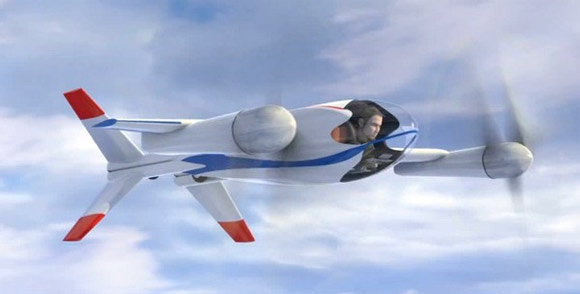Engineers from NASA unveiled a personal carbon fiber flying machine that runs off of electric motors and goes by the name, Puffin. Just because the one passenger Puffin doesn’t sounds manly, doesn’t mean it isn’t.
“The Puffin is designed to stand on its tail, which serves as the landing gear (check out the video below). Once the Puffin transitions to horizontal flight, the pilot can cruise at more than 140 miles per hour. Hit the boost mode and this bird will do nearly 300 mph. The projected range is 50 miles on a charge. Yeah, that’s not much, but using electricity means the Puffin’s powerplant won’t be limited by air density. NASA says it should be able to climb under full power to around 30,000 feet before the battery pack would be depleted enough to require coming back down.”

Because this aircraft uses an electric motor, its quieter and cleaner than most engines, with essentially no emissions. And thanks to its carbon fiber body, the Puffin weighs just about 400 pounds, which includes the lithium phosphate batteries.
Michael Moore, the lead engineer from the NASA Langley Research Center said the Puffin got its name for two reasons; its “apparently called the most environmentally friendly bird because it hides its poop, and we’re environmentally friendly because we have essentially no emissions. Also, puffins tend to live in solitude, only ever coming together on land to mate, and ours is a one-person vehicle.†Along with its awkward stature.
While this carbon fiber aircraft was conceptualized to bridge the gap between cars and planes, it has yet to be flown publicly and is said to have lasted for only five minutes in flight. “It’s inevitable that someday more and more people will take to the air in on-demand vehicles,” Moore told Discovery News. “It will happen. There’s just no other way to achieve fast, on-demand, high-speed travel.”
The Puffins unveiling took place at a helicopter trade organization meeting back in January of 2010 and its YouTube video views have soared ever since. Come back for updates to see when and if Moore’s vision becomes a reality and we can start keeping an eye out for the personal flying, carbon fiber machine in a neighborhood near you.
Video
[Sources: Discovery, Wired, Engadget]